The Papal
Tiara
The tiara is the most formal ceremonial symbol of the
Prince-Bishop and
Pope-Catholicos of Rome-Ruthenia. There are currently two tiaras in
use.
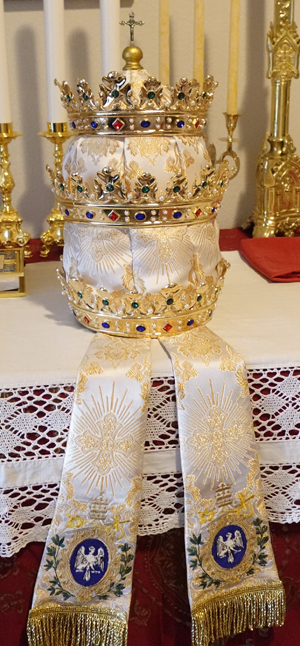
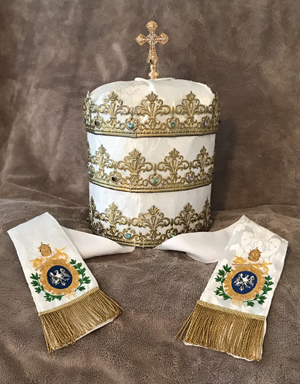
Ferula (Pastoral Staff)
The pastoral staff used by the Roman-Ruthenian Pope, either carried by
him personally or by a
Chamberlain.
It consists of gilded staff with a
crucifix at the top.
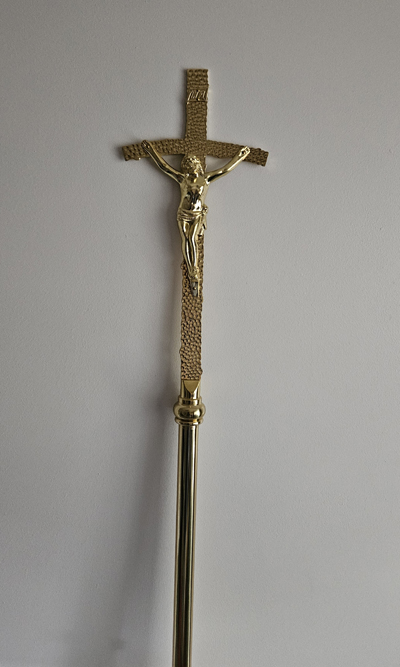
Hand Blessing Cross
The
hand blessing cross is the same as used by bishops and priests of the
United Roman-Ruthenian Church. It is used in the solemn pontifical
blessing, as well as often carried either by itself or with the ferula.
It is a symbol of Apostolic authority.
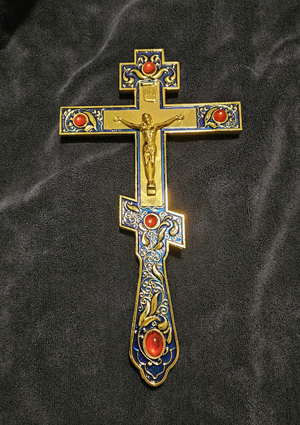
Orlets
Common also to Orthodox bishops in general and appropriate to
bishops in the
United Roman-Ruthenian Church.
The orlets depicts an
eagle flying over a city and is placed under the feet of the
Roman-Ruthenian Pope at the throne, as well as in certain other
locations when standing.
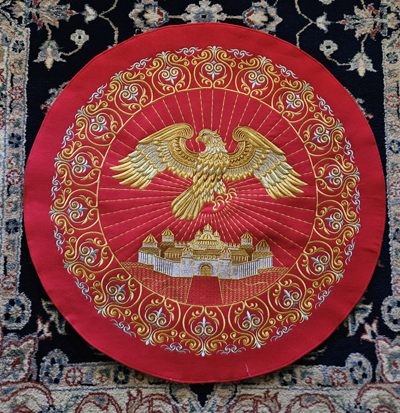
Baculum
The baculum is a short pastoral staff used by the Prince-Bishop of
Rome-Ruthenia and by other bishops of the
Gallo-Russo-Byzantine
and
Anglican-Byzantine Rites.
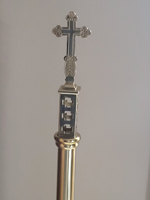
Staff of St. Stephen
The Staff of St. Stephen contains relics of Holy Stephen the Apostle
and Archdeacon. It is carried usually by a Chamberlain or other member
of the Pontifical Court. Most formally it is escorted by the Masters of
the Virga Rubea.
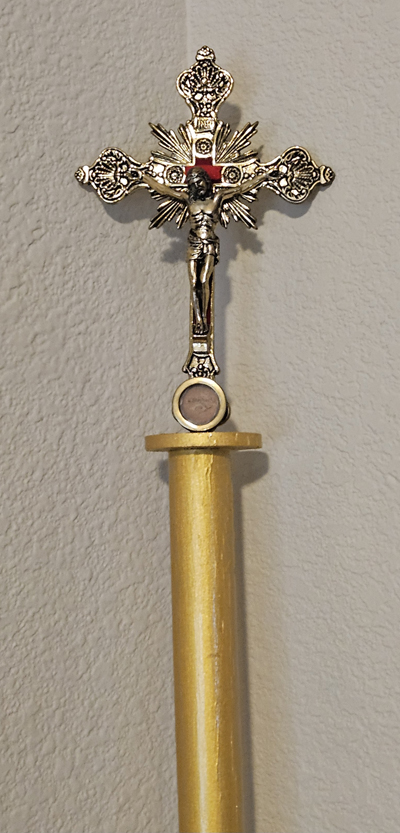
Flabella
The flabella are two ostrich feather fans bearing the coat of arms of
the Roman-Ruthenian Pope. They are carried by Pontifical Chamberlains.
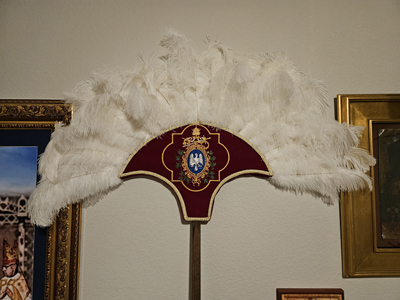
Pontifical Mace
The mace is a symbol of authority and is carried by a mazziere (mace
bearer) of the
Pontifical
Court.
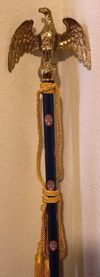
Orb
The orb, also depicted in the church's coat of arms, is a symbol of its
titular temporal patrimony and cultural authority. The Prince-Bishop of
Rome-Ruthenia is invested with the orb at his coronation.
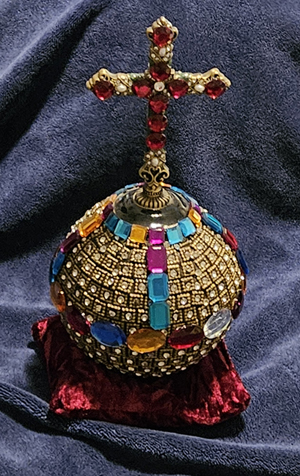
Baton as First Marshal of
the Pontifical Imperial State
The
symbol of authority as head of the
Pontifical Walsingham Guard.
It is
carried on behalf of the Roman-Ruthenian Pope typically by a mazziere
(mace bearer).

Baton as Sovereign of the
Most Holy Pontifical Order of the Eagle
The
symbol of authority as
head of the
order. It is carried on behalf of
the Roman-Ruthenian Pope typically by a mazziere (mace bearer).
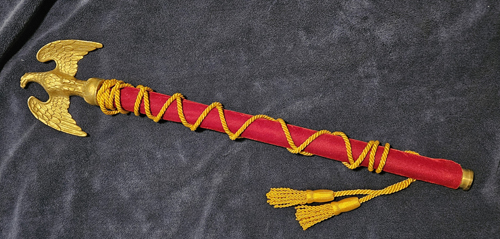
Insignia as First Marshal
of the Pontifical Imperial State
The
symbol of authority as head of the Pontifical Walsingham Guard. The
shoulder insignia is worn on fringed epaulettes or shoulder boards
(shown below). Sleeve insignia varies according to the uniform and is
detailed in the
uniform
regulations.
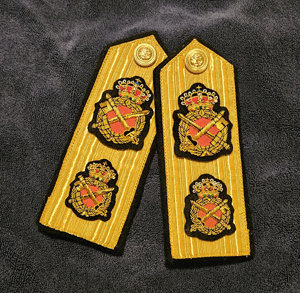
Liturgical,
Ceremonial, and General Vesture
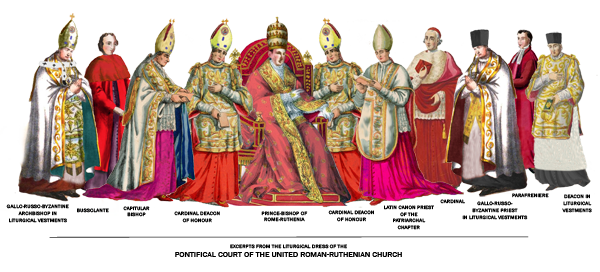
Fanon
A liturgical vestment used exclusively by the Roman-Ruthenian Pope, the
form proper to the United Roman-Ruthenian Church is a circular garment
that fits over the shoulders. It is either white or white and yellow
striped, and in either case is trimmed in gold with a gold cross in the
front. It is worn over the pianeta and under the cope. The omophore is
placed over it.
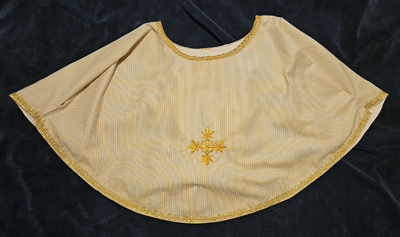
Omophore
The omophore used is that of a
Gallo-Russo-Byzantine
bishop, but worn uncrossed.
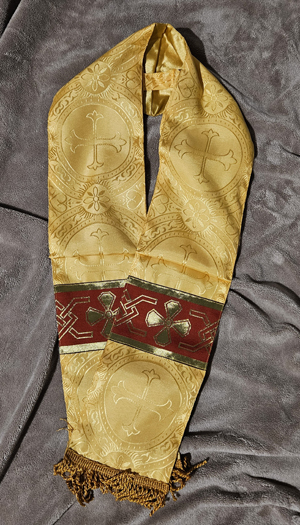
Pontifical Ring
Like bishops in general, the Roman-Ruthenian Pope uses pontifical rings
in daily wear and ceremonially. The vary according to the
circumstances.
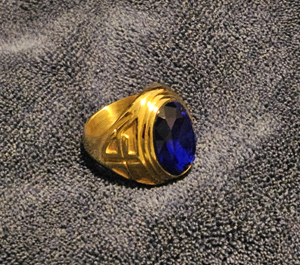
Pontifical Gloves
The pontifical gloves of the Roman-Ruthenian Pope are the same in style
as those used by bishops throughout the United Roman Ruthenian Church.
Consistent with the Gallo-Russo-Byzantine usage, they are not worn in
liturgy, but only optionally with pontifical dress and choir dress. In
however, for papal use, by custom they are only in red and white,
following the same color correspondence as noted for the subcintorium.
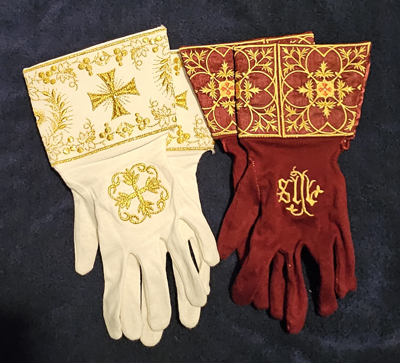
Pallium
The pallium is a symbol of apostolic authority. It is used by
metropolitans within the United Roman-Ruthenian Church As well as by
all archbishops of the Gallo-Russo-Byzantine Rite. It is of specific
design as noted in the ceremonial, and it is worn with three pins.
Following the Gallo-Russo-Byzantine usage, the pope wears it in solemn
liturgy over the cope. The pallia of the United Roman-Ruthenian Church
are placed by a relic of St. Peter the Apostle before being conferred.
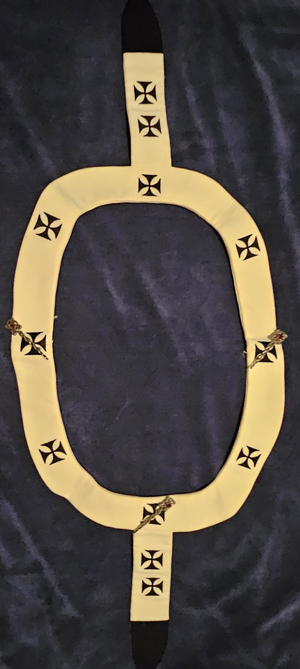
Patriarchal Cross and
Engolpions
Most formally, the Roman-Ruthenian Pope wears the traditional pectoral
cross with two engolpions, one of Christos Pantokrator and the other of
the Theotokos. Less formally, either the pectoral cross or the single
engolpion of the Theotokos is used.
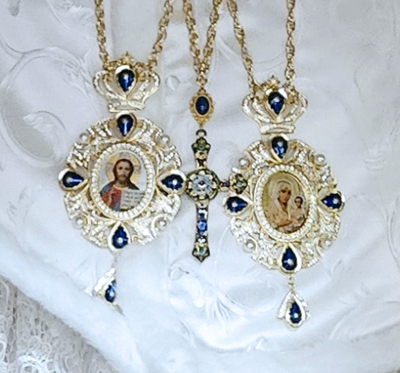 Shown: The full
patriarchal style, a pectoral cross with an engolpion of Christos
Pantokrator and an engolpion of the Theotokos.
Shown: The full
patriarchal style, a pectoral cross with an engolpion of Christos
Pantokrator and an engolpion of the Theotokos.
Subcintorium
A
liturgical garment unique to the Roman Ruthenian Pope, it is worn
around the waist on the left side. It is used only in two colors,
white/gold or red. The gold version may be used when the liturgical
color is white, green, red or blue. The red version may be used in the
liturgical color is red, purple, rose, or black.
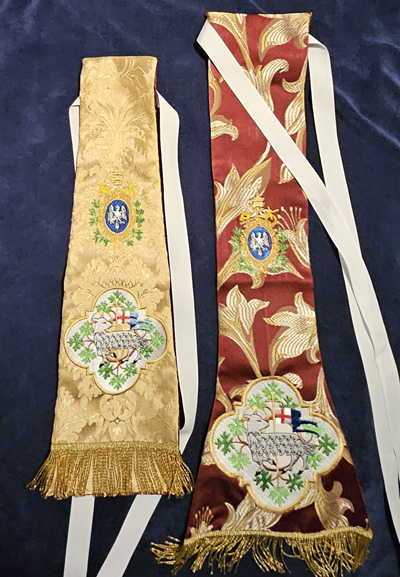
Mantum
The
mantum is the principal ceremonial pontifical garment of the
Prince-Bishop of Rome-Ruthenia. It is similar in design to a cope but
longer, with a train. The mantum is always red in color with gold
embellishment. There is a second version, known as the mantulum, which
is of the same design and meaning, but shorter for practical purposes.
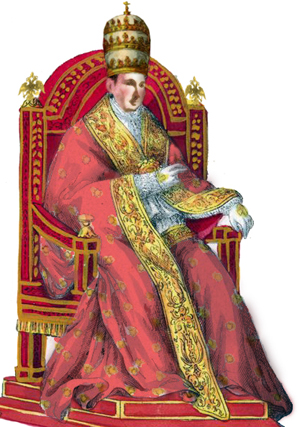
Cappa Magna
The Roman-Ruthenian Pope uses the cappa magna only at Matins of
Christmas, on Ash Wednesday, on Good Friday, on penitential occasions
in general in place of the mantum, and likewise at funeral liturgy. It
is scarlet with either a fur or plain hood according to season and
occasion. When used by the Prince-Bishop, the hood is always worn over
the head.
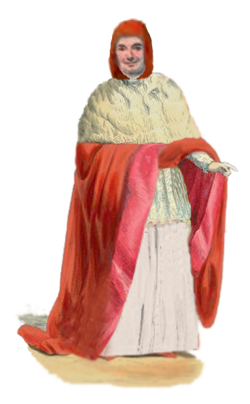
Mozzette
The mozzetta of the Prince-Bishop is similar to that of
jurisdictional bishops. It is used for both choir dress and
academic/court dress. However, it comes in several forms. The winter
mozzetta, being the principle one, is either deep red velvet or scarlet
fabric, both with white fur trim. The summer mozzetta, also used for
penitential occasions, is in red watered silk without fur. The paschal
mozzetta, used from Pascha until the Ascension, is in white damask with
fur trim.
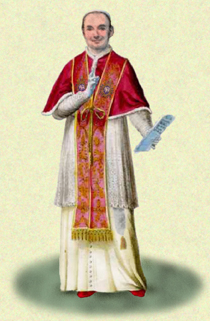 Choir dress with scarlet
winter mozzetta and pastoral stole.
Choir dress with scarlet
winter mozzetta and pastoral stole.
Falda
The falda is a ceremonial garment worn over the cassock with liturgical
dress and choir dress, with a train of approximately 1 metre in length.
It is carried by a train bearer with an additional two optional train
bearers in the front, all of whom are members of the Pontifical Court.
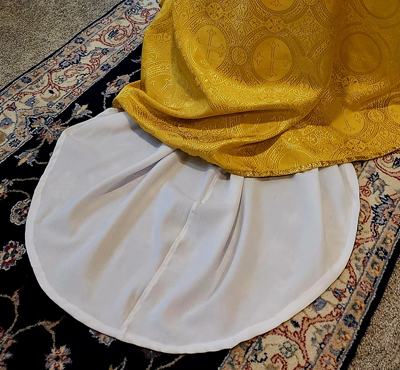 The falda visible from
underneath liturgical vestments.
The falda visible from
underneath liturgical vestments.
Camauro
The
camauro is the principal headwear of the Prince-Bishop other than the
zucchetto. It is used mainly with choir and academic/court dress, but
also may be used with the regular habit. It comes in several varieties.
The deep red velvet camauro with fur trim is used with the matching
mozzetta. The camauro in red watered silk with fur trim is worn with
the scarlet winter mozzetta or for general use. The camauro in white
damask with fur trim is worn with the paschal mozzetta or for general
use. And, the camauro in white linen without fur is worn with the
summer mozzetta or for general use.
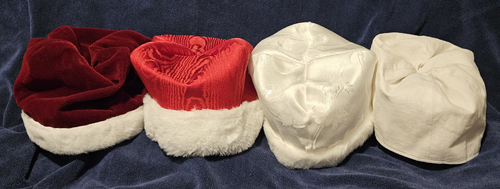
Pastoral Stole
The
pastoral stole is a key symbol of authority of the Roman-Ruthenian
Pope. Its usual form is in red. With the paschal habit, it is in white
or gold. It usually is decorated with the pontifical coat of arms,
saints of the Holy Apostolic See, and other symbols. It is worn only
with choir dress over the mozzetta.
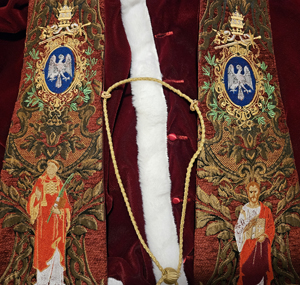 General pastoral stole.
General pastoral stole.
Pontifical Mitre
The
pontifical mitre is a liturgical mitre unique to the Roman-Ruthenian
Pope. It is a variation of the standard mitre of the
Gallo-Russo-Byzantine Rite, but following the general design of the
tiara (which itself is not a liturgical item). It is used for
particularly solemn liturgy and ceremonies.
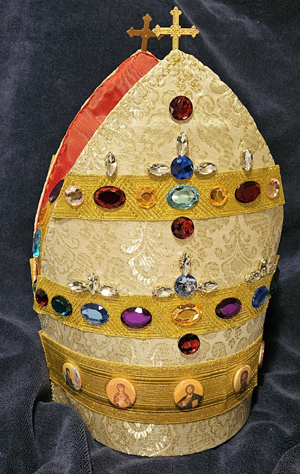
Zucchetto
The
zucchetto is the same as used by all clergy throughout the United
Roman-Ruthenian Church. That of the Prince-Bishop is white watered
silk.
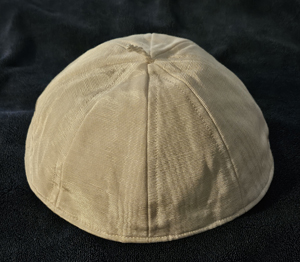
Fascia
The
fascia (band cincture) is the same in style as worn by all clergy of
the United Roman-Ruthenian Church. That of the Prince-Bishop is in
white watered silk and finished with either red and gold fringe or a
gold tassel. It is often embroidered with the pontifical coat of arms.
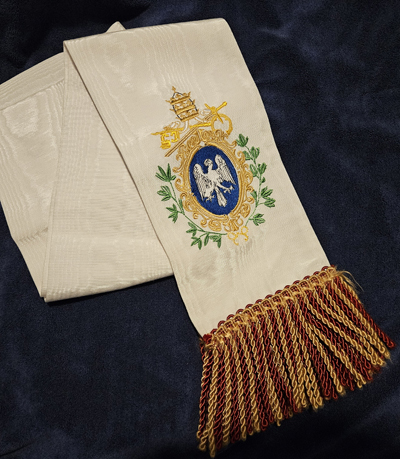
General Habit
The
general habit of the Roman-Ruthenian Pope is white in the style of
cassock used throughout the United Roman-Ruthenian Church. For general,
non-liturgical wear, it may be worn also with a white peligrina
(shoulder cape), the red toga with green front tabs, and/or the red
ferraiolo with gold cords.
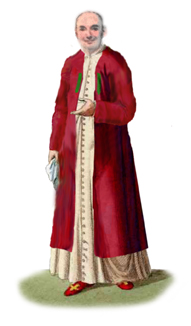 The general habit, shown
with the red toga.
The general habit, shown
with the red toga.
Academic and Court Dress
Academic or Court Dress is similar to choir dress. However, in
place of the rochet is worn the red toga underneath the mozzetta. It is
the Prince-Bishop's principal academic dress and also used at
ceremonies of the URRC's principal seminary,
Pontifical Georgian College.
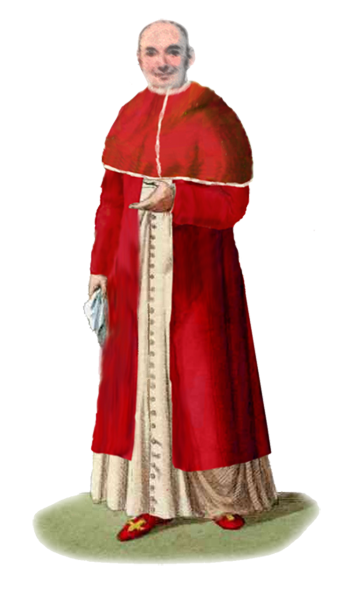
Private Habit
The private habit of the Roman-Ruthenian Pope is an optional garment
for non-liturgical, non-ceremonial occasions. It is a black cassock
with red trim, white buttons, and the usual white fascia. It may be
used otherwise for public occasions, though its use is far less common
than the regular white cassock.
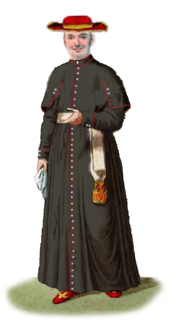
Abito Corto and Civic Suit
Abito corto is the same as for clergy in the United
Roman-Ruthenian Church, but in white. Most formally, it is used with
knee breeches. The civic suit consists of a regular white suit with
white stock, collarino, or tie.
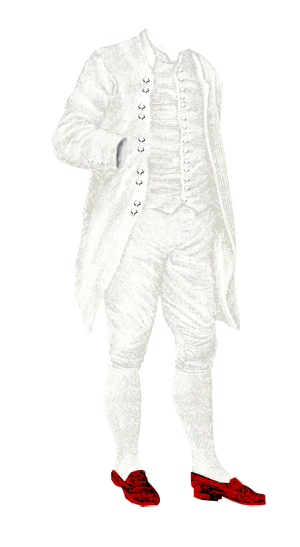 Abito corto, shown with
clerical frock coat, knee breeches, and red slippers.
Abito corto, shown with
clerical frock coat, knee breeches, and red slippers.
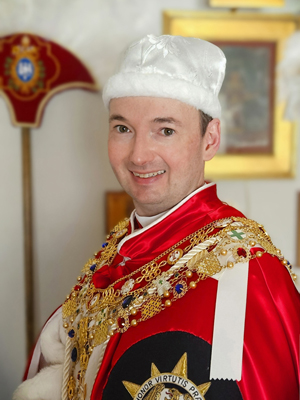 H.A.H. Radislav I in the
church robes of the Supreme Roman-Ruthenian Aquiline Order of Christ
H.A.H. Radislav I in the
church robes of the Supreme Roman-Ruthenian Aquiline Order of Christ
Chivalric Regalia of the Roman-Ruthenian
Church & State
Collars of the Orders
The collars of the
Aquiline Order
of Christ and the
Most Holy
Pontifical Order of the Eagle, with the Pontifical Imperial Collar.
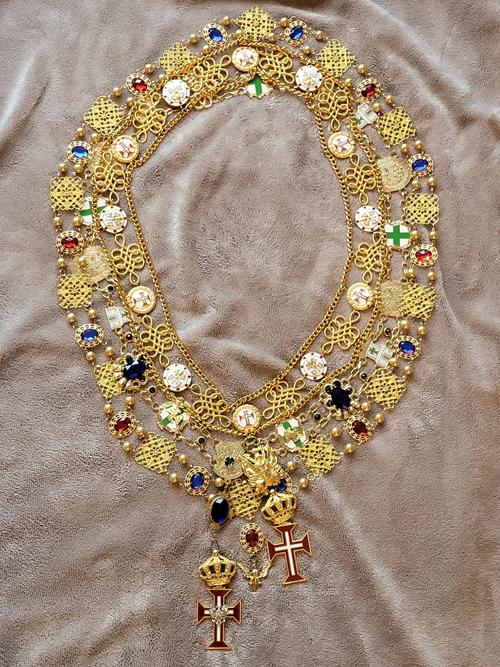
Broad Ribbons (Sashes) of
the Orders
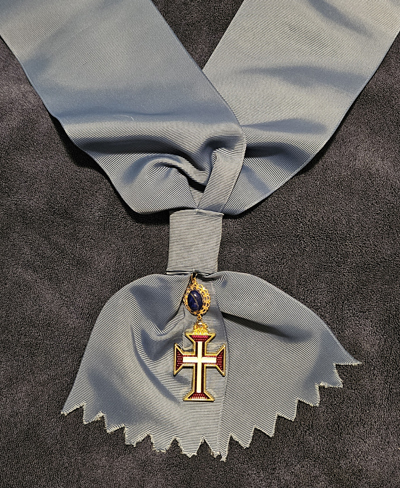 Supreme Roman-Ruthenian Aquiline Order of
Christ
Supreme Roman-Ruthenian Aquiline Order of
Christ
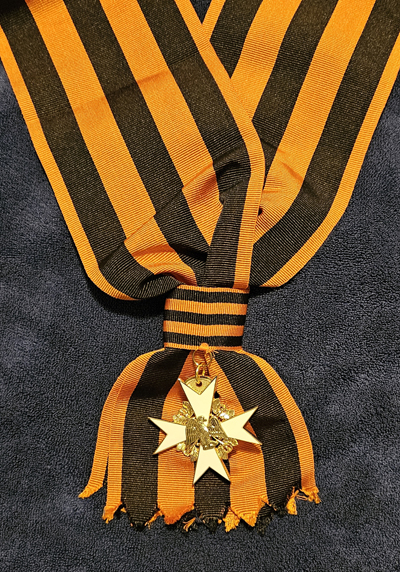 Grand Commander of the Order of Sts.
George and Olga
Grand Commander of the Order of Sts.
George and Olga
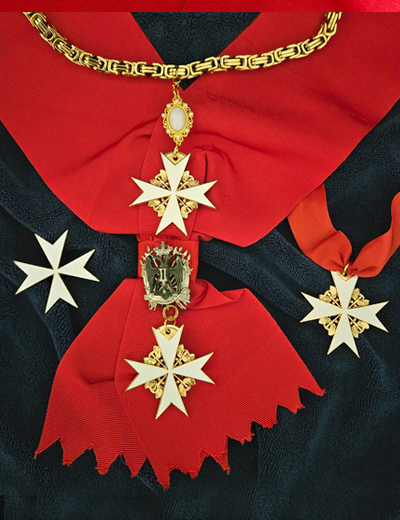 Sovereign and Bailiff Grand Cross of the Russian-Yugoslavian Order of St. John
Sovereign and Bailiff Grand Cross of the Russian-Yugoslavian Order of St. John
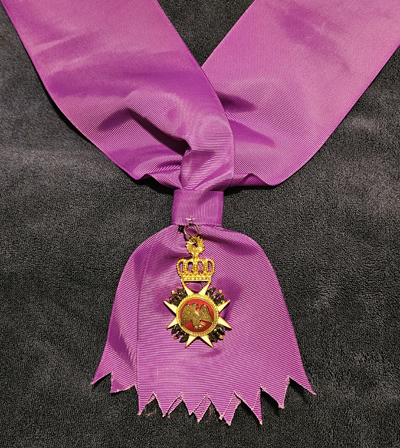 Relgious and Military Order of Sts. Anne
and Alexander Nevsky
Relgious and Military Order of Sts. Anne
and Alexander Nevsky
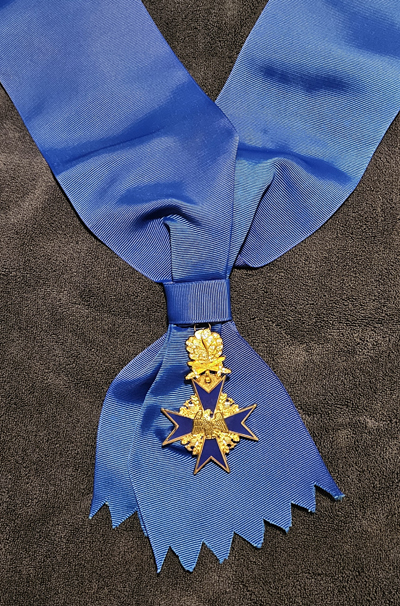 Pontifical
Order of the Eagle
Pontifical
Order of the Eagle
(superceded in practice by the sash of the Order of Christ)
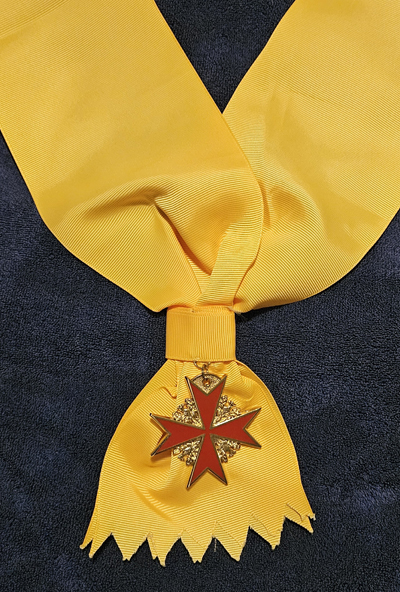 Order of the Pontifical Imperial State
Order of the Pontifical Imperial State
Stars of the Orders
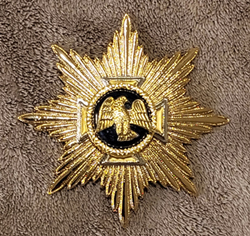 Joint star of the Supreme
Roman-Ruthenian Aquiline Order of Christ and the Most Holy Pontifical
Order
Joint star of the Supreme
Roman-Ruthenian Aquiline Order of Christ and the Most Holy Pontifical
Order
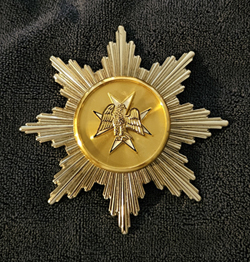 Grand Commander of the Order of
Sts. George and Olga
Grand Commander of the Order of
Sts. George and Olga
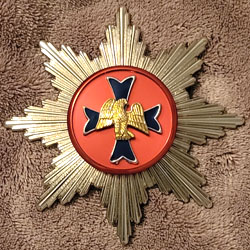 Relgious and Military Order of
Sts. Anne and Alexander Nevsky
Relgious and Military Order of
Sts. Anne and Alexander Nevsky
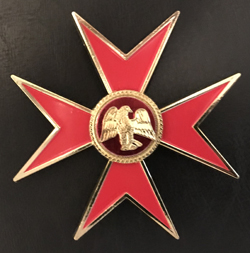 Order of the Pontifical
Imperial State
Order of the Pontifical
Imperial State
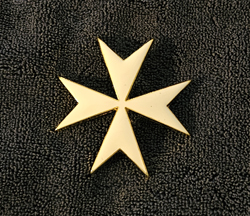 Russian/Yugoslavian Order of
St. John (Malta)
Russian/Yugoslavian Order of
St. John (Malta)
Grand Collarette
This consists of two chains from which is suspended the insignia of the
Aquiline Order of Christ, the Most Holy Pontifical Order of the Eagle,
and the Russian/Yugoslavian Order of St. John. It is optionally used
with the clerical habit.
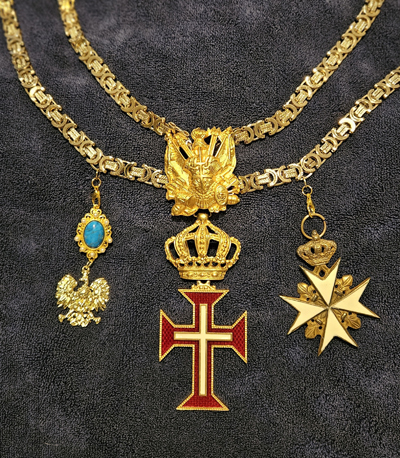
Church Regalia of the
Aquiline Order of Christ
and the Most Holy Pontifical Order
The
regalia as Sovereign of the Orders of Christ and the Eagle consists of
the usual scarlet mantle of the orders. It is worn over a scarlet
clerical cassock, with white fascia (the only instance in which the
Roman-Ruthenian Pope makes use of a scarlet habit). Over the cassock
and under the mantle is worn the red clerical toga with fur trime and a large white fur cappuccio with red lining. The
regalia is worn with a camauro
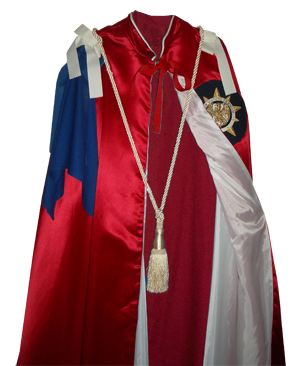
Collarette of the Supreme
Roman-Ruthenian Aquiline Order of Christ
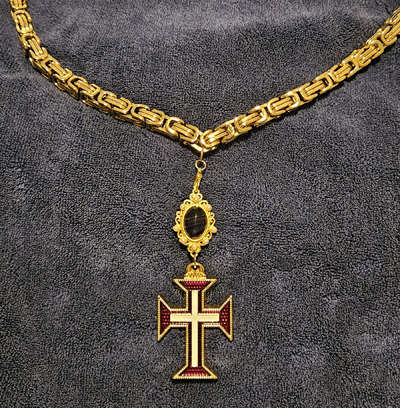
Collarette of the Most Holy
Pontifical Order
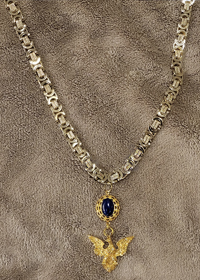
Large Medal Bar of the
Pontifical Religious & Dynastic Orders
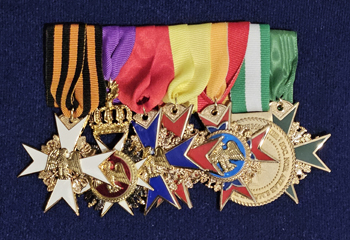
Official
Website of the United Roman-Ruthenian Church and the Pontifical
Imperial State of Rome-Ruthenia
(also
referred to as the Roman-Ruthenian Church and State)
Please be advised: any website or entity not listed below,
or
any unauthorized use of the names, titles, or symbols associated with
the Roman-Ruthenian Church and State, is unofficial and not affiliated
with the legitimate and singular Roman-Ruthenian Church and State.
Official Websites of the Church:
www.statopontificio.org
www.pontificalstate.org
www.catholicate.org
www.ilnunzioromano.org
Official Websites of the Prince-Bishop:
www.radislav.org
www.rutherfordjohnson.com
www.statopontificio.org/johnson-roma-rus
